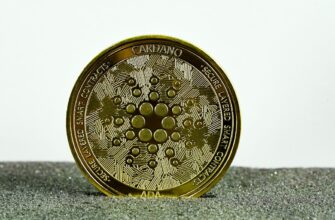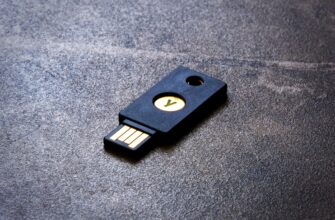**Introduction**
M-Pesa, Africa’s leading mobile money platform, has revolutionized financial access for millions. But can it bridge the gap to Bitcoin, the world’s most popular cryptocurrency? This guide explores how M-Pesa Bitcoin integrations work, their benefits for remittances and savings, and practical steps to get started. With crypto adoption rising in regions like Kenya and Tanzania, combining M-Pesa’s convenience with Bitcoin’s borderless potential offers exciting opportunities—and risks. Dive in to unlock the future of digital finance.
**What is M-Pesa and Why Pair It with Bitcoin?**
M-Pesa, launched in 2007, allows users to send, receive, and store money via basic mobile phones, bypassing traditional banks. It’s ubiquitous in East Africa, with over 50 million active users. Bitcoin, a decentralized digital currency, enables fast, low-cost global transfers but often requires bank access or complex exchanges. Pairing them addresses key gaps: M-Pesa users can tap into Bitcoin for international remittances, inflation hedging, or investment without needing a bank account. This synergy promotes financial inclusion, especially in underserved markets.
**How to Buy Bitcoin with M-Pesa: Step-by-Step Guide**
Buying Bitcoin via M-Pesa isn’t direct but uses peer-to-peer (P2P) platforms or exchanges. Here’s how:
* **Step 1: Choose a P2P Platform** – Sign up on services like Paxful, LocalBitcoins, or Binance P2P, which support M-Pesa transactions.
* **Step 2: Verify Your Account** – Complete KYC (Know Your Customer) checks by submitting ID proofs for security.
* **Step 3: Find a Seller** – Search for sellers accepting M-Pesa payments, comparing rates and user reviews.
* **Step 4: Initiate Trade** – Select the Bitcoin amount, send M-Pesa to the seller’s number via your M-Pesa app, and confirm payment.
* **Step 5: Receive Bitcoin** – The seller releases Bitcoin to your exchange wallet, usually within minutes. Always use escrow for safety.
**Selling Bitcoin for M-Pesa Funds: Easy Conversion**
Converting Bitcoin to M-Pesa cash is straightforward on P2P platforms:
* **List Your Bitcoin** – On an exchange, create a sell offer specifying M-Pesa as the payment method.
* **Match with a Buyer** – Wait for a buyer to accept your rate, then share your M-Pesa number.
* **Confirm Receipt** – Once Bitcoin is sent to the buyer’s wallet, they transfer funds to your M-Pesa via mobile payment.
* **Withdraw or Spend** – Use M-Pesa for bills, transfers, or cash withdrawal at agents. Fees vary by platform but are often lower than traditional remittance services.
**Key Benefits of Using M-Pesa with Bitcoin**
Integrating M-Pesa and Bitcoin offers transformative advantages:
* **Lower Remittance Costs** – Sending money abroad via Bitcoin costs a fraction of traditional services, with M-Pesa enabling local cash-out.
* **Financial Inclusion** – Unbanked populations can access global crypto markets using only a phone.
* **Speed and Convenience** – Transactions settle in minutes, 24/7, without bank delays.
* **Inflation Hedge** – Bitcoin provides a store of value in economies with volatile local currencies.
* **Expanded Utility** – Use Bitcoin for online purchases, savings, or micro-investments, funded by M-Pesa.
**Challenges and Risks to Consider**
Despite perks, M-Pesa Bitcoin usage has hurdles:
* **Regulatory Uncertainty** – Some African governments restrict crypto, so check local laws (e.g., Nigeria’s limits).
* **Volatility** – Bitcoin’s price swings can lead to losses; only invest what you can afford.
* **Scams and Fraud** – P2P trades risk dishonest sellers; stick to reputable platforms with escrow.
* **Fees** – M-Pesa transfer fees (e.g., 1-3%) and exchange margins add costs.
* **Technical Barriers** – New users may struggle with wallet security or phishing attacks.
**The Future of M-Pesa and Bitcoin in Africa**
As crypto adoption grows, partnerships could formalize. Safaricom (M-Pesa’s parent) is exploring blockchain, hinting at future integrations. With Africa’s young, tech-savvy population, M-Pesa Bitcoin could drive economic empowerment, especially for cross-border trade and DeFi (decentralized finance). However, clearer regulations and education are essential for sustainable growth.
**FAQ Section: M-Pesa Bitcoin Questions Answered**
* **Can I buy Bitcoin directly on M-Pesa?**
No, M-Pesa doesn’t support direct crypto purchases. Use P2P exchanges like Paxful as intermediaries.
* **Is using M-Pesa for Bitcoin legal?**
It depends on your country. In Kenya, it’s permitted, but nations like Algeria ban crypto. Always verify local regulations.
* **What are the fees for M-Pesa Bitcoin transactions?**
Expect M-Pesa transfer fees (up to 3%) plus exchange or P2P platform charges, totaling 5-10% in some cases.
* **How safe is buying Bitcoin with M-Pesa?**
Risks include scams, so use trusted platforms with escrow, enable 2FA, and never share PINs. Start with small amounts.
* **Can I send Bitcoin to M-Pesa for cash?**
Yes! Sell Bitcoin on a P2P platform and choose M-Pesa as the payout method for instant mobile money access.
**Conclusion**
M-Pesa Bitcoin bridges mobile money and cryptocurrency, empowering users with affordable, fast financial tools. While challenges like volatility and regulation persist, the combo unlocks new possibilities for Africa’s digital economy. Ready to explore? Start small, prioritize security, and join the crypto revolution today.








